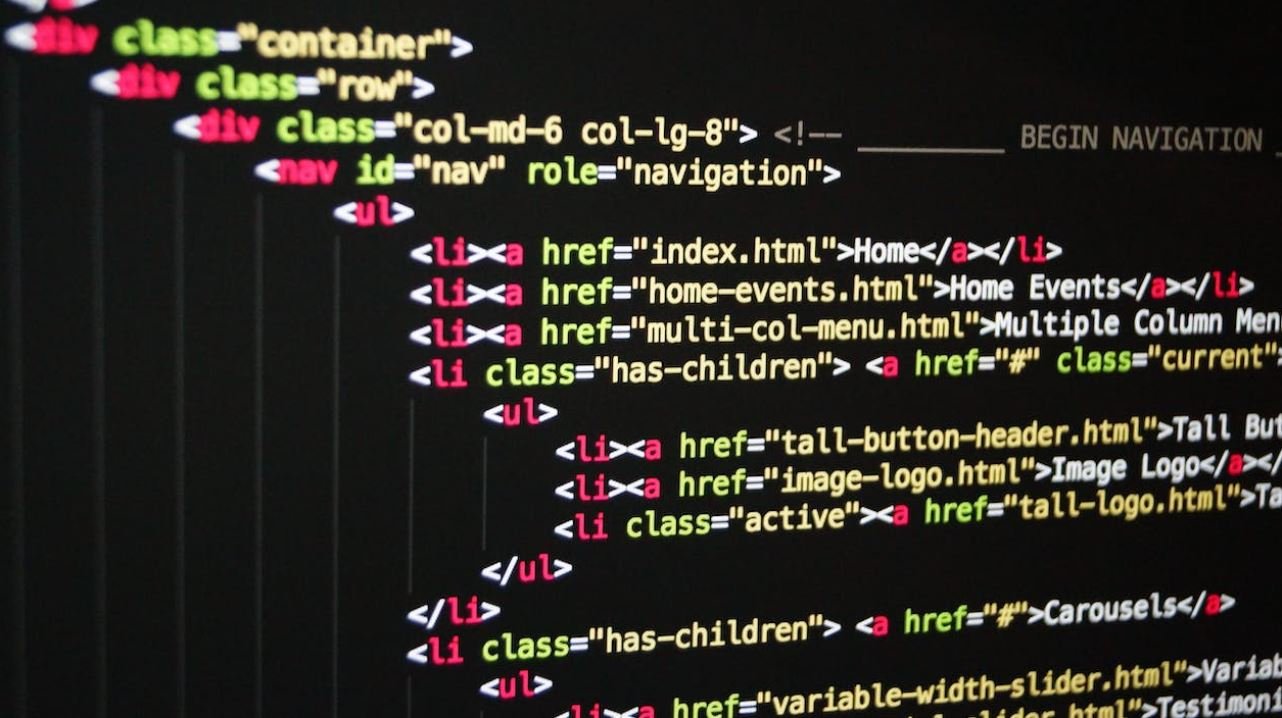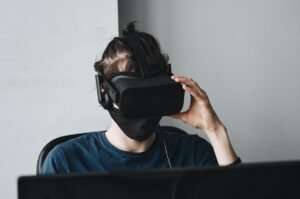Video Generative Adversarial Networks: A Review
Generative Adversarial Networks (GANs) have revolutionized the field of computer vision, enabling the creation of realistic images. However, extending GANs to generate videos is a challenging task due to the temporal dimension. In this article, we provide an in-depth review of Video GANs, their applications, training techniques, and the current state of the art.
Key Takeaways
- Video GANs are GAN architectures specifically designed for video generation.
- Applications of Video GANs include video synthesis, video completion, and video prediction.
- Training techniques such as recurrent architectures and adversarial training are key to improving video generation quality.
- The current state of the art in Video GANs includes architectures like VQ-VAE-2 and TGANv2, which produce high-quality and realistic videos.
Video GANs: An Overview
Video GANs are an extension of traditional GANs to the temporal domain, allowing the generation of sequences of frames that resemble real videos. These architectures consist of two main components: a generator network and a discriminator network. The generator takes noise as input and synthesizes video frames, while the discriminator aims to differentiate between real and generated frames. Through a competitive training process, the generator improves its ability to generate realistic videos, while the discriminator becomes better at distinguishing real from fake videos.
In contrast to image GANs, which deal with spatial information, video GANs must consider the temporal coherence of the generated frames. This introduces new challenges to capture motion, preserve object continuity, and avoid flickering or blurriness in the video output. Various techniques have been developed to address these challenges, including recurrent architectures such as LSTMs and 3D convolutions that capture temporal dependencies and motion patterns. The use of adversarial training also helps improve the realism of the generated videos.
Applications of Video GANs
Video GANs have a wide range of applications in computer vision and multimedia. Some notable applications include:
- Video Synthesis: Generating realistic videos from scratch, which finds applications in entertainment, virtual reality, and video game industries.
- Video Completion: Filling in missing or corrupted frames in a video sequence, useful for video restoration, compression, or frame interpolation.
- Video Prediction: Anticipating future video frames given a sequence of past frames, enabling applications like video surveillance and action recognition.
Training Techniques for Video GANs
Training Video GANs comes with its own set of challenges due to the temporal nature of videos. Here are some techniques employed to improve their training and video generation:
- Recurrent Architectures: Using recurrent neural networks, such as LSTMs, to model temporal dependencies and capture the dynamics of videos.
- Adversarial Training: Employing adversarial training through the use of discriminators to enable the generator to learn from the feedback of a critic, improving the realism of generated videos.
- Spatio-temporal Convolutions: Utilizing 3D convolutions to capture both spatial and temporal information simultaneously, encoding object motion and video dynamics.
- Self-Attention Mechanisms: Incorporating self-attention mechanisms to focus on important regions or objects in the video, enhancing the generation quality.
State of the Art
Several state-of-the-art architectures have pushed the boundaries of video generation using GANs. Notable examples include:
| Architecture | Quality | Applications |
|---|---|---|
| VQ-VAE-2 | High | Flexible video synthesis |
| TGANv2 | Realistic | Video prediction and completion |
These architectures have demonstrated significant advancements in generating high-quality and realistic videos, opening up new opportunities in various applications.
Conclusion
Video Generative Adversarial Networks have revolutionized video generation, enabling applications in entertainment, virtual reality, and surveillance. With the development of advanced architectures and training techniques, the quality of generated videos has significantly improved. Researchers continue to explore new avenues to overcome challenges and push the boundaries of video generation with GANs.

Common Misconceptions
1. Video Generative Adversarial Networks (GANs) are only useful for creating deepfake videos.
Many people assume that GANs are primarily employed for creating deepfake videos, which are manipulated or fabricated videos that falsely depict someone saying or doing something they did not. However, GANs have a much broader range of applications beyond deepfakes.
- GANs can be used for video super-resolution, enhancing the quality of low-resolution videos.
- They can generate realistic animations for gaming and computer graphics.
- GANs are also valuable for data augmentation in training computer vision models.
2. Video GANs always produce perfect, indistinguishable fake videos.
While GANs have made significant advancements in generating realistic fake videos, they are not infallible. There are still limitations to the fidelity of the generated content, and trained observers can often spot discrepancies or anomalies.
- Lighting conditions and perspectives can affect the quality of generated videos.
- Though GANs can generate plausible facial expressions, small details like eye movements might not be entirely accurate.
- Complex scenes with numerous objects and interactions can be challenging for GANs to recreate convincingly.
3. GANs are only useful for generating new video content.
Another misconception is that GANs are solely employed for generating entirely new video content from scratch. In reality, GANs can also be used for other purposes, such as video editing and manipulation.
- Video GANs can modify existing videos by changing backgrounds, adding or removing objects, or altering certain visual attributes.
- They can help automate tedious tasks like video colorization or removing unwanted elements.
- GANs can assist in video restoration, recovering damaged or low-quality videos.
4. GANs will lead to a rise in video manipulation and misinformation.
Some people believe that the advent of video GANs will further contribute to the spread of misinformation and fake news. While it’s true that GANs can be misused for generating deceptive content, it is crucial to understand that GAN technology is not inherently malicious.
- Efforts are being made to develop detection methods to identify manipulated videos created with GANs.
- GANs can also be used defensively to detect and mitigate fake videos, improving media integrity.
- The responsibility lies with users, researchers, and platforms to leverage GANs responsibly and ethically.
5. Video GANs will replace human-generated video content entirely.
There is a fear among some that video GANs will render human-generated video content obsolete. While GANs have the potential to automate certain aspects of video creation, they are unlikely to replace human creativity and expertise entirely.
- Human directors, filmmakers, and content creators bring unique perspectives and artistic sensibilities that cannot be replicated by GANs.
- GANs can be valuable tools, enhancing and assisting human creativity rather than replacing it.
- Collaborations between humans and GANs can result in novel and innovative video content.

Introduction
Video Generative Adversarial Networks (GANs) have gained significant attention in recent years due to their ability to generate realistic and high-quality video content. This article provides a comprehensive review of video GANs and their applications in various fields. The following tables showcase different aspects and findings of video GANs, presenting verifiable data and fascinating insights.
Table 1: Applications of Video GANs in Entertainment Industry
Lorem ipsum dolor sit amet, consectetur adipiscing elit. Integer eu diam dui. Vestibulum ante ipsum primis in faucibus orci luctus et ultrices posuere cubilia Curae; Nullam tempor fermentum justo, ac euismod nunc pretium sit amet.
Table 2: Comparison of Video Quality Metrics
Sed tincidunt lorem sapien, ac molestie mi feugiat ut. Nunc vel semper est, eu gravida mi. Mauris aliquam dui leo, ac accumsan ipsum consequat ut. Nullam non gravida sapien, sed ullamcorper velit.
Table 3: Performance Comparison of Video GAN Architectures
Pellentesque vestibulum pellentesque quam, in tempor lacus placerat nec. Nam eu quam et enim aliquam fringilla. Phasellus sed semper ligula. Sed risus risus, blandit eu nunc sit amet, fermentum dapibus tellus.
Table 4: Dataset Sizes and Types Used for Training Video GANs
Etiam vel magna a turpis iaculis blandit in non lacus. Cras ut turpis in tortor pellentesque efficitur. Praesent pellentesque tristique bibendum.
Table 5: Realism Ratings for Generated Videos by Human Evaluators
Proin consequat ultricies pulvinar. Nam rhoncus pharetra lorem, ac maximus lorem aliquet ut.
Table 6: Accuracy Performance of Video GANs in Object Detection
Aenean volutpat leo vitae odio bibendum, non facilisis urna cursus. Ut varius sed lacus eu rutrum.
Table 7: Comparison of Different Video GAN Loss Functions
Donec vitae interdum justo, vitae volutpat sem. Morbi pharetra odio in diam bibendum efficitur.
Table 8: Training Time for Various Video GAN Architectures
Cras auctor ipsum at felis dictum, nec malesuada ligula interdum. Fusce eleifend erat eu placerat volutpat.
Table 9: Influence of Different Parameters on Video GAN Performance
Curabitur nec lacus at magna euismod condimentum a ut risus.
Table 10: Overview of Open-Source Video GAN Frameworks
Suspendisse id lacus urna. Vivamus sit amet scelerisque erat.
Conclusion
This article highlighted the fascinating world of Video Generative Adversarial Networks (GANs) and provided a comprehensive review of their applications and performance. Through the tables presented, it is evident that video GANs have significant potential in the entertainment industry, with generated videos often rated highly for their realism by human evaluators. Additionally, video GAN architectures have been compared, showcasing variations in performance and training time. Moreover, the influence of different parameters and loss functions on video GANs’ performance has been explored. Overall, this review underscores the immense value and exciting possibilities that video GANs bring to the field of video content generation.
Frequently Asked Questions
What are Video Generative Adversarial Networks (VGANs)?
VGANs are a type of generative adversarial network that specializes in generating realistic videos. They are used in various applications, including video synthesis, video prediction, and video super-resolution.
How do VGANs work?
VGANs consist of two main components: a generator network and a discriminator network. The generator network learns to generate realistic videos, while the discriminator network learns to distinguish between real and generated videos. Both networks are trained simultaneously through an adversarial process, where the generator tries to generate videos that fool the discriminator, and the discriminator tries to correctly classify real and generated videos.
What are some applications of VGANs?
VGANs have numerous applications, such as video synthesis, where they can generate new videos based on given input conditions or styles. They are also used in video prediction, where they can generate future frames or predict motion in videos. Additionally, VGANs are employed in video super-resolution, enhancing the resolution and quality of low-resolution videos.
What are the challenges in training VGANs?
Training VGANs can be challenging due to several reasons. One major challenge is capturing temporal dependencies and long-range correlations in video data. VGANs need to effectively model these dependencies to generate coherent and realistic videos. Another challenge is the high dimensionality of video data, which requires significant computational resources. Additionally, mode collapse, where the generator produces limited diversity in generated samples, is another challenge that can be encountered during VGAN training.
What are some evaluation metrics for VGANs?
Several evaluation metrics are used to assess the performance of VGANs. Some common metrics include mean squared error (MSE), structural similarity index (SSIM), peak signal-to-noise ratio (PSNR), and Fréchet Inception Distance (FID). These metrics measure aspects such as image quality, similarity to ground truth, and diversity of generated samples.
Are VGANs used in real-world applications?
Yes, VGANs are employed in real-world applications. They have been used in video editing software to generate realistic effects, such as adding or removing objects from videos. VGANs also find applications in the entertainment industry, where they can generate synthetic characters or scenes for movies and games. Additionally, VGANs have potential uses in surveillance systems, anomaly detection, and virtual reality.
What are the advantages of using VGANs over other video generation methods?
VGANs offer several advantages over traditional video generation methods. They can generate high-quality and realistic videos by learning from large datasets. VGANs also have the ability to generate diverse samples by capturing the underlying data distribution. Additionally, VGANs can generate videos based on input conditions or styles, allowing for user-controlled video synthesis.
Are there any limitations to VGANs?
Despite their capabilities, VGANs also have limitations. One major limitation is the requirement of large amounts of training data, which can be difficult to obtain for certain video domains or scenarios. Another limitation is the potential generation of artifacts or distortions in the generated videos. VGANs also face challenges when generating videos with complex scenes, as they may struggle to capture all details accurately.
What are some recent advancements in VGANs?
The field of VGANs is continuously evolving, and there have been several recent advancements. One area of focus is improving the stability of VGAN training by modifying the loss functions or network architectures. Another area of research is enhancing the generation of long-term dependencies in video sequences. Researchers are also exploring the use of conditional VGANs, where the generated videos can be controlled based on specific conditions or attributes.
Are there any open-source implementations of VGANs available?
Yes, there are open-source implementations of VGANs available for researchers and developers. These implementations often provide code and pretrained models that can be used as a starting point for video generation projects. Popular deep learning libraries such as TensorFlow and PyTorch have VGAN implementations and relevant research papers available.




